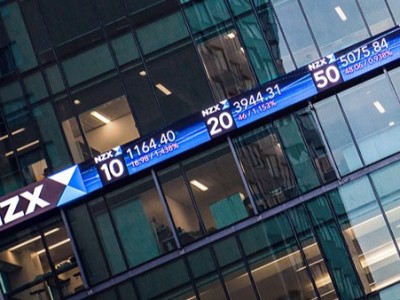Learn » Blog » Market commentary: What happened in September 2025
Market commentary: What happened in September 2025
Published on 09/10/2025
Topics:
investments

Markets had plenty to digest in September, from the United States (finally!) cutting interest rates, to a deepening recession here at home, and a falling Kiwi dollar. Globally, central banks seem to be treading very carefully as economies slow, while investors are watching for signs that rate cuts may finally support growth.
United States: Rate cuts begin amid economic weakness
In mid September, the Federal Reserve (Fed) kicked off its first interest rate cut since December 2024, lowering rates after revised employment data revealed deeper cracks in the US economy than expected. The decision reflected growing concerns around sluggish jobs growth from policymakers. While most expect further cuts to stimulate the economy, Fed Chair Jerome Powell noted that any future cuts will depend on incoming data - taking a meeting-by-meeting approach.
At the same time, political gridlock loomed large towards the end of the month - unresolved budget negotiations risked triggering a government shutdown (which has since eventuated in early October) with furloughs of up to 750,000 federal workers daily. This is estimated to cost around $400 million in lost wages per day. Despite the ongoing uncertainty, investors welcomed the rate cut as a sign the Fed is finally ready to pivot toward an easing cycle.
Australia: Resilient growth despite weather setbacks
Australia’s economy outperformed expectations according to data released in September, with GDP rising 0.6% in the second quarter of 2025. Strong retail spending, helped by holiday timing and widespread retail discounts, drove this lift. However, severe weather events in Queensland dampened what could have been even stronger economic growth.
The Reserve Bank of Australia (RBA) is expected to continue easing interest rates, though persistent consumer strength could make its path less predictable. Australian inflation ticked up slightly to 2.8% in the 12 months to July, driven mainly by housing, food, tobacco, and alcohol. Meanwhile, the government’s Energy Bill Relief Fund rebate was extended to the end of 2025, providing households with temporary relief from their high electricity costs.
New Zealand: Recession deepens and investor confidence dips
Back here at home, the economy contracted 0.9% in Q2, confirming that the current recession is proving both deeper and longer than expected. While some economists expect a rebound to start showing in the third quarter of 2025, opinions are divided on how strong a recovery we may start to see. According to ASB’s Investor Confidence Survey, investor confidence dropped sharply from 9% to 1% in the June quarter, reflecting growing anxiety around global instability, trade tensions, and tariffs.
The current downturn is being coined by commentators as an “engineered recession,” driven by earlier policy tightening from the Reserve Bank of New Zealand (RBNZ) and the government. Adding to the local finance headlines, Dr Anna Breman was appointed as the new Governor of the RBNZ, making her the first woman to hold this esteemed position. With an impressive background spanning Swedbank, the World Bank, and the Swedish Ministry of Finance, her leadership marks a new era for NZ’s central bank.
Currencies: Kiwi dollar hits multi-year lows
The New Zealand dollar had a rather tough month, sliding to a 15-year low against the Euro (NZ$1 = €0.497) and continuing to weaken against both the US Greenback and Australian dollars. Since April, the Kiwi has fallen 6.5% against the Aussie, a far cry from the near-parity optimism of a decade ago. The exchange rate declines largely reflect New Zealand’s weak economic data compared to others’. A weaker Kiwi often serves to help exporters, but it also adds to import costs… So it’s a balancing act for households and businesses alike.
Global markets: Mixed results as Asia leads
Global sharemarkets ended September largely positive, with only a couple of exceptions. The US S&P 500 rose 3.5% for the month - its strongest since May, driven by upbeat earnings and optimism about Fed rate cuts. The index is now up more than 13% year-to-date, a dramatic turnaround from the 15% slide we saw earlier in April. This serves as a great reminder not to panic when markets crash!
Asian markets were the standout performers in September, buoyed by renewed US-China trade cooperation and fresh tariff reductions between the US. and Japan. European shares also gained, though they lagged the US and Asian markets. Overall, Asia emerged as the top-performing region for Q3, led by strong tech-driven momentum.
In New Zealand, the NZX 50 index reached its highest point since 2021 (and up 3% for the month). A standout performer was Restaurant Brands, which surged over 65% following a takeover bid by Spain’s Finaccess Restauración. Meanwhile, Australia’s ASX 200 fell just over 1% in September, bucking the positive trend. However, it’s worth noting that the ASX had grown over 5% over the prior three months.
Bonds: Global recovery underway
Bond markets were relatively stable through September. With the Fed’s first rate cut now in play, global bond yields eased slightly (to 4.1%), supporting moderate returns (remember that lower interest rates tend to have an inverse effect on bond market returns). NZ government bonds gained further ground as investors positioned for a prolonged period of lower interest rates, with a 3% return seen over the quarter. Falling yields may offer some relief for borrowers and their mortgages, but the benefits for consumers are likely to flow through gradually.
All in all, September marked somewhat of a turning point for markets: the start of long-anticiptated rate cuts in the US, ongoing easing and economic growth in Australia, and a deepening slowdown here at home. Investor sentiment (which indicates the economic mood for financial markets) remains fragile. But as inflation continues to moderate, there’s growing optimism that we’re nearing the end of the global tightening cycle and things will *hopefully* start to look up soon. As we always say, whatever happens - it’s best to stay the course regardless of volatility, and stick to your own investment goals and horizon!


